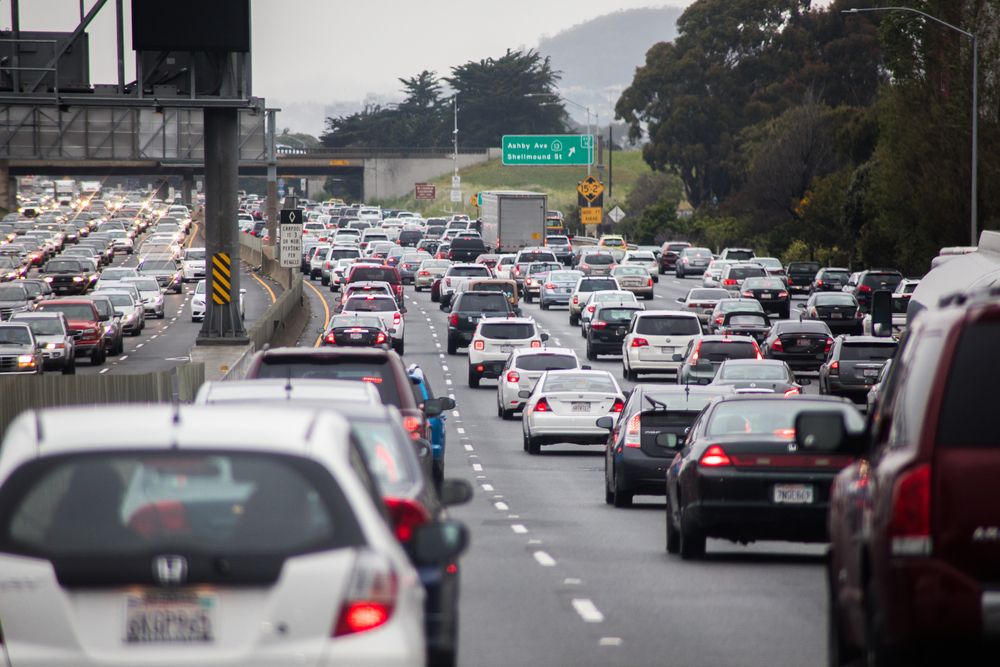
Traffic is a well-known source of frustration for drivers. Many people experience terrible traffic on their way to and from work daily. Did you know that the average worker in the United States spends over 46 hours per year stuck in traffic? That’s almost a full work week!- Causes Of Traffic
Generally, traffic can be frustrating and time-consuming, but with a little knowledge, you can avoid some of the most common causes of traffic.
This article will discuss 5 common traffic causes, so you’ll know how to avoid them.
Table of Contents
1. Delayed Traffic Control Devices
Signs, signals, pavement markings, and other devices put along highways and streets to move cars, and people safely and effectively are examples of traffic control devices. These devices are strategically positioned to direct traffic, limit vehicle speeds, and warn of potentially hazardous circumstances.
However, occasional disruptions in traffic flow caused by control devices such as railroad grade crossings and badly timed signals add to congestion and unpredictability in journey time. As a result, to minimize traffic congestion, you should hire traffic control equipment that provides 24/7 support service since traffic flows throughout the day.
2. Car Accidents
An automobile collision on a highway may abruptly halt traffic. Car accidents obstruct traffic flow for a variety of causes.
Perhaps the debris of the damaged automobile is impeding the passage of other vehicles. People may also have slowed down to allow the emergency vehicle to reach the accident site. Additionally, drivers might engage in rubbernecking, which involves stopping for a short period to observe what is happening.
But it is only appropriate to stop during these accidents to allow emergency vehicles to move. You never know whether one of those ambulances is driving for a life or death emergency, so always give way to them.
Otherwise, when the emergency takes its toll owing to the difficulties of getting out of the situation, more automobiles will enter the route, adding to the painfully slow traffic.
3. Construction
Construction activity is another issue that influences traffic flow. These modifications may include reducing the number or width of driving lanes, lane shifts, lane diversions, reducing or eliminating shoulders, and even temporary road closures.
Slower speeds and lane closures are common in construction zones. Vehicles travel at the usual speed limit toward the road work, then slow to meet it.
Even though drivers are normally aware of the work, the unexpected slowdown of cars creates a bottleneck. The portion before the work zone quickly fills up with more automobiles than it can manage at regular speeds.
And while being detained in a construction zone is inconvenient, interstate maintenance helps to alleviate traffic congestion in the long term.
4. Saturation
The most prevalent type of traffic congestion happens when the number of automobiles exceeds the roadway’s capacity. These incidents occur whenever too many vehicles are on the road, and they are most likely to happen during “rush hour.” And routes with too many vehicles for the available area might take longer to empty.
Transportation engineers have addressed roadways’ physical capacity or the maximum traffic quantity that a certain highway stretch can carry. Various factors influence capacity, including the number and width of lanes and shoulders, merging areas at interchanges, and highway orientation.
5. Spectacular Traffic Jam
Even little changes made by one motorist might result in large traffic gridlock. Phantom traffic congestion is not caused by an evident reason, such as an accident. Every time a vehicle slows or speeds up, it impacts traffic flow around them. This flow then spreads to the other automobiles in the vicinity.
If one of the cars on the road decides to drive a bit slower, the cars behind it will also have to reduce their speeds; otherwise, they will collide. When these automobiles drive slowly, cars approaching their side of the road will get congested.